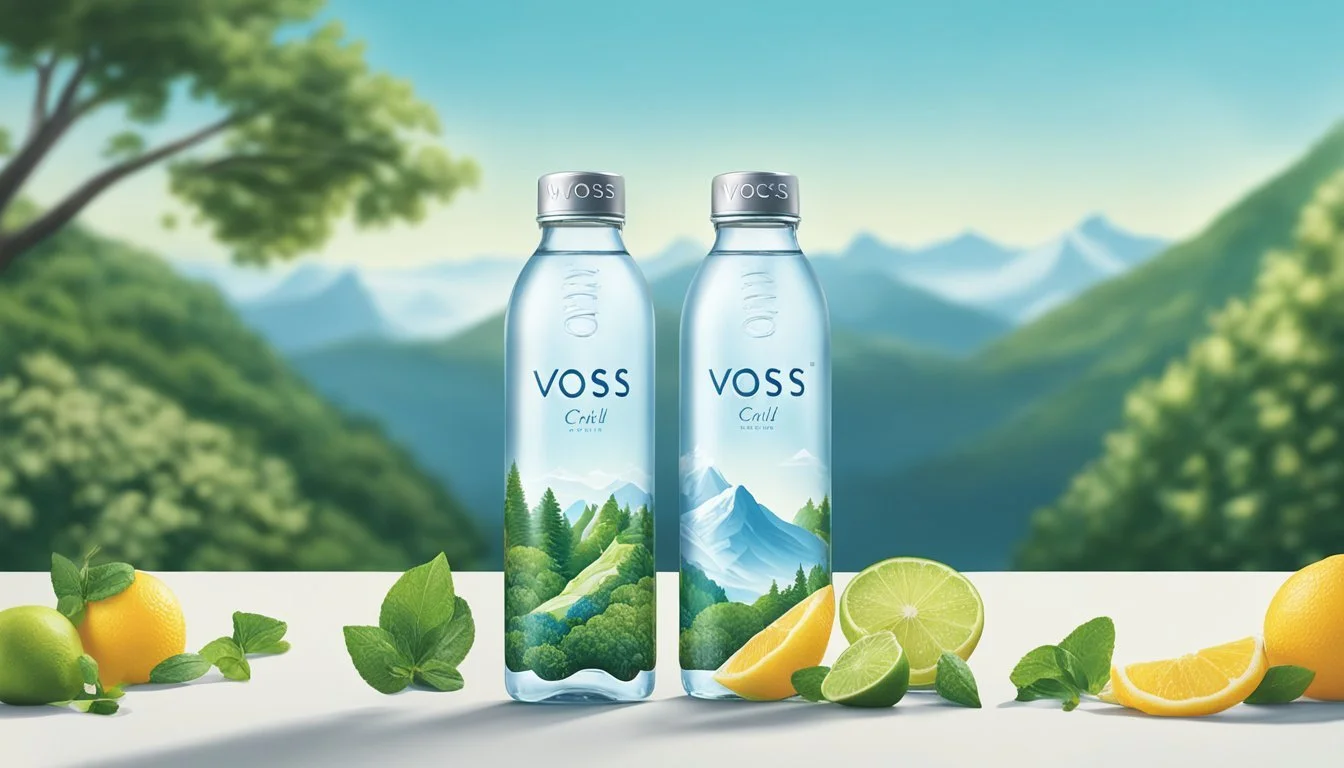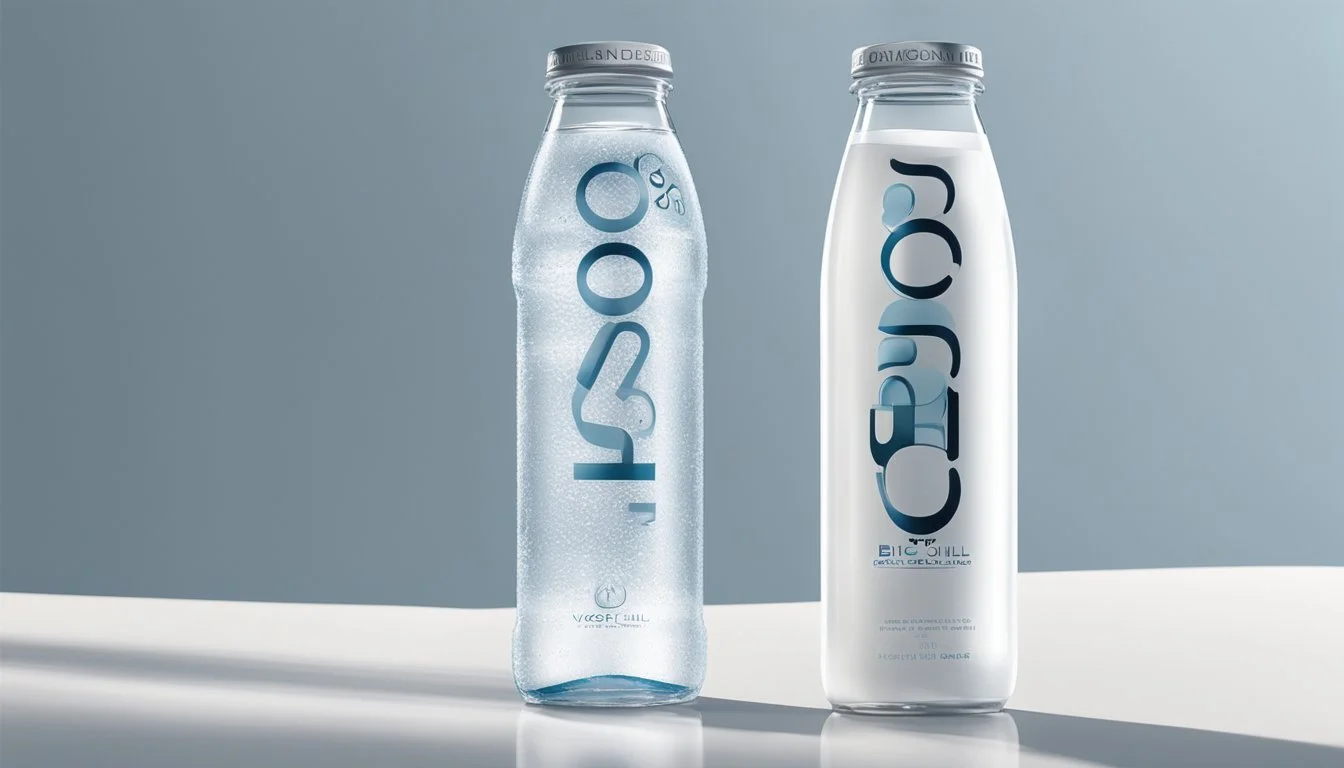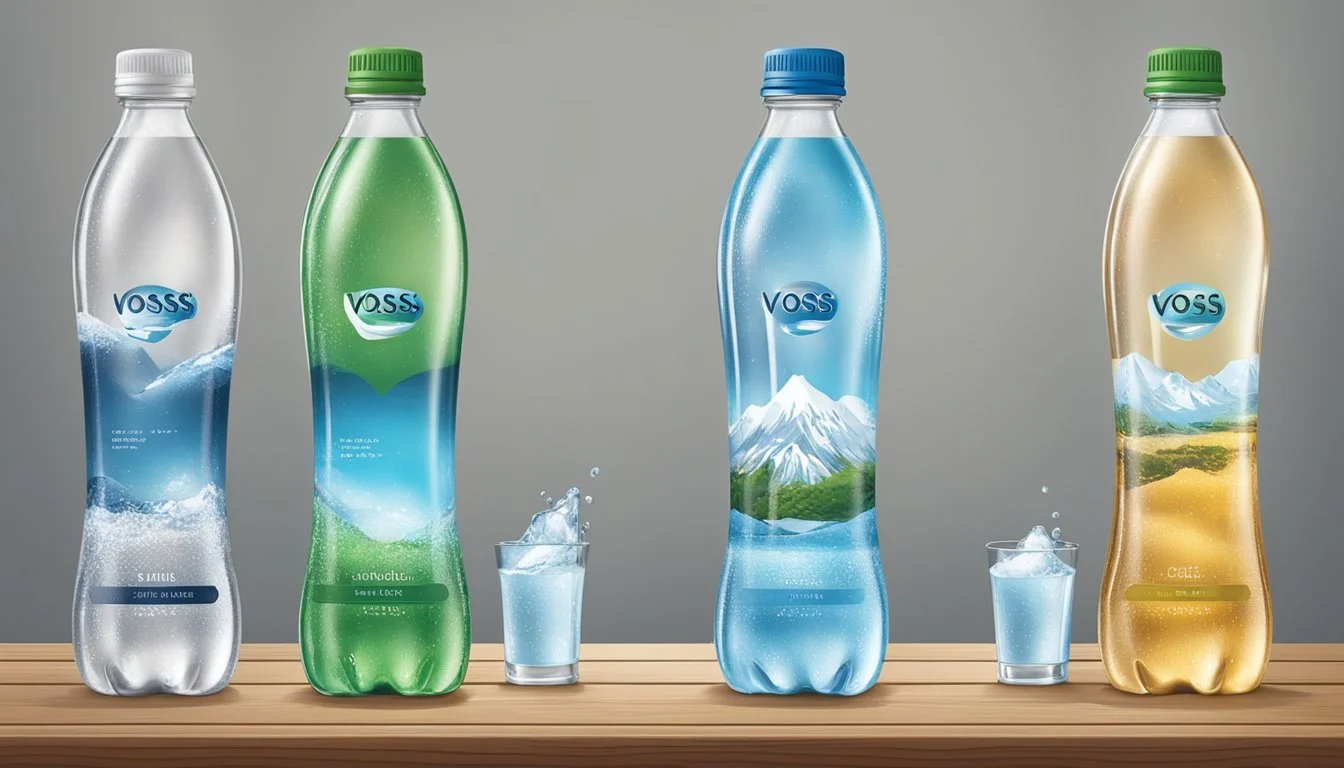Voss vs. Big Chill
A Comprehensive Comparison of Bottled Water Quality
Comparing bottled water brands can be quite complex, as taste, source, and purification methods vary widely. Voss, sourced from natural springs in Norway, is known for its minimalist packaging and pure taste. Big Chill, on the other hand, offers a more cost-effective option, often considered for its practicality and accessibility.
Voss delivers a premium experience with its smooth, velvety texture, while Big Chill appeals to those looking for reliable hydration at a lower price point. It’s essential to understand that both brands cater to different market segments, making the choice dependent on individual preferences and budget.
For those who prioritize luxury and subtle flavors, Voss is likely the better option. For consumers seeking functionality and affordability, Big Chill stands out. Each brand has carved out a unique niche, providing valuable choices for a diverse range of bottled water enthusiasts.
Bottled Water Overview
Understanding bottled water involves looking at its various types, sources, and the regulations that ensure its quality. Consumers often encounter terms such as purified, spring, and mineral water, each with distinct characteristics and benefits.
What is Bottled Water?
Bottled water is packaged water available for retail consumption.
It comes from various sources like springs, wells, and even municipal supplies. The appeal of bottled water lies in its convenience and the perception of higher quality compared to tap water. Brands market their water based on its source, purification method, and health benefits.
Common types include purified water, known for its extensive filtration, and spring water, which is collected directly from natural springs.
Categories of Bottled Water
Bottled water is categorized into several types:
Purified Water: Extensively filtered using processes like reverse osmosis to remove impurities.
Spring Water: Sourced directly from natural springs, often rich in minerals.
Mineral Water: Contains naturally occurring minerals without added artificial ingredients.
Alkaline Water: Known for its higher pH level, claimed to neutralize acid in the body.
Sparkling Water: Infused with carbon dioxide gas, giving it effervescence.
Each category offers specific advantages and is suited to different consumer preferences and needs.
Regulations and Standards
The quality and safety of bottled water are regulated by various standards.
In the United States, the Food and Drug Administration (FDA) oversees bottled water quality, ensuring it meets set requirements.
Standards cover the source, treatment, bottling, and labeling processes to protect consumers. Internationally, organizations like the World Health Organization (WHO) provide guidelines for safe drinking water.
These regulations ensure bottled water is safe for consumption and accurately represented in its labeling. Compliance with these standards is crucial for maintaining public trust in bottled water products.
Voss and Big Chill: Brand Histories
Both Voss Water and Big Chill have unique origins and brand evolutions that distinguish them in the crowded bottled water market. Each has a distinct source and journey that cater to different consumer expectations and preferences.
Origin of Voss Water
Voss Water was launched 16 years ago with a clear premium strategy. Originating from Southern Norway, it is sourced from an underground aquifer, providing naturally filtered, artesian water.
The brand's sleek, cylindrical glass bottle makes it stand out. Its commitment to luxury and aesthetic appeal has helped Voss become more than just a bottled water brand but also a symbol of an affluent lifestyle.
Voss maintains its premium positioning by ensuring top-notch quality and purity. The company's marketing targets affluent and aspirational consumers who prioritize both health and luxury.
Big Chill: Brand Origin and Evolution
Big Chill is known for its refreshing natural spring water, sourced from pristine natural springs. The brand emphasizes purity and taste, catering to health-conscious individuals.
The brand has carved a niche in the premium bottled water segment by focusing on sustainable and eco-friendly packaging. Big Chill's evolution involves constant innovation in water purification and packaging technology to meet modern consumer demands.
Big Chill's commitment to providing high-quality water with a minimal environmental footprint resonates well with environmentally conscious consumers. The brand continues to adapt and grow, balancing tradition with innovation.
Source and Purification Process
Voss and Big Chill both prioritize water quality but differ significantly in their sources and purification techniques. Understanding these differences is essential for evaluating which brand is better suited for hydration and health purposes.
Voss: Source and Purity
Voss water originates from an artesian aquifer located in Southern Norway. This water source is renowned for its natural purity and is protected from external pollutants due to its deep underground location.
To maintain its high standards, Voss uses a minimal filtration process. The water is bottled at the source to ensure that its natural taste and mineral composition remain intact. Unlike many other brands, Voss offers options in both glass and plastic packaging to cater to different consumer preferences.
While its environmental footprint has been under scrutiny, particularly concerning transportation and packaging, Voss remains a popular choice due to its perceived purity and high-quality sourcing.
Big Chill: Harvesting and Purification
Big Chill focuses on local sourcing to minimize the environmental impact caused by transportation. By harvesting from nearby water sources, the brand ensures freshness while reducing carbon emissions associated with long-distance shipping.
The purification process employed by Big Chill includes advanced filtration techniques designed to remove impurities. Although specifics on their methods are less detailed than some competitors, the brand emphasizes its commitment to high water quality and safety standards.
Big Chill aims for a balance between minimal processing and ensuring the water’s cleanliness and health benefits. This approach appeals to consumers who are environmentally conscious and prefer locally sourced products.
Water Quality and Contents
When comparing Voss and Big Chill bottled waters, it's crucial to consider the various elements that influence water quality and nutritional benefits, including mineral content, electrolytes, and pH levels.
Evaluating Mineral Content
Mineral content plays a significant role in the taste and health advantages of bottled waters. Voss water is sourced from an underground aquifer in Norway and is known for its low mineral content, making it taste exceptionally pure.
On the other hand, Big Chill sources its water from natural springs in the United States and typically has a higher mineral content. This can impart a distinctive taste and potentially offer additional health benefits, such as calcium and magnesium, which are essential for bone and muscle function.
Here is a quick comparison of their typical mineral contents per liter:
Mineral Voss Big Chill Calcium (mg/L) 5 20 Magnesium (mg/L) 1 5 Sodium (mg/L) 5 10
These differences can affect the overall hydration quality and personal preference.
Role of Electrolytes in Hydration
Electrolytes are essential for maintaining proper hydration, regulating nerve and muscle function, and balancing blood pH levels. Voss contains lower levels of natural electrolytes, which may be preferable for those seeking water with minimal additives.
Big Chill, however, often includes added electrolytes like potassium and sodium to enhance hydration benefits, especially useful for athletes or individuals engaging in intensive physical activity.
Their pH levels also vary:
Voss tends to have a pH around 6, which is slightly acidic.
Big Chill generally has a pH of 7.5 to 8, aligning more with alkaline properties.
These variations in pH can influence the perceived smoothness and health benefits of each water brand. Understanding these elements helps consumers make informed choices based on their hydration needs and health goals.
Tasting Notes: Flavor Profiles
Voss and Big Chill offer distinct flavor experiences, each catering to different palates. Their sensory characteristics, including taste, flavor, and aftertaste, define their unique identities.
Voss: Sensory Characteristics
Voss Artesian Water is known for its unique blend of minerality. It has a clean, crisp taste with a subtle but noticeable mineral flavor that sets it apart from more neutral waters.
The water has a smooth texture and is free from any plastic taste due to its glass bottle packaging. The aftertaste is clean, without any lingering taste, making it a refreshing choice for those who appreciate a pure, unembellished water.
Big Chill: Flavor and Aftertaste
Big Chill offers a neutral taste with a soft mouthfeel, making it an easy-drinking option. The flavor is devoid of any strong mineral notes, positioning it as a more basic but reliable water.
There’s a mild sweetness, potentially appealing to those who dislike the taste of high-mineral waters. The aftertaste is minimal, ensuring that it doesn’t interfere with the palate, which makes it a versatile choice for pairing with meals or for hydration throughout the day.
Packaging and Environmental Impact
Both Voss and Big Chill prioritize sustainability in their bottle designs and materials. Their efforts in recycling and reducing environmental impact are significant factors for consumers who are environmentally conscious.
Bottle Design and Materials
Voss utilizes glass bottles and recyclable plastic options. The glass bottles are reusable and often chosen for their elegant design and premium feel. Recyclable plastic bottles offer a lighter, more portable choice.
Big Chill opts for eco-friendly materials and minimalist design. Their packaging includes boxed water options made from renewable resources, designed to minimize waste. This approach appeals to those looking to reduce plastic use.
These design choices reflect each brand's commitment to combining aesthetics and functional utility.
Sustainability and Recycling Efforts
Voss and Big Chill both support sustainability through their products and practices.
Voss focuses on reducing their carbon footprint by using recyclable materials. Their glass bottles, while heavier, offer reuse potential which compensates for transport emissions.
Big Chill emphasizes biodegradable packaging and renewable content. The boxed water uses recyclable materials, contributing to a lower environmental impact during production and disposal.
By prioritizing sustainable practices, these brands demonstrate a clear commitment to reducing environmental impact, making them appealing choices for eco-conscious consumers.
Market Position and Consumer Perceptions
Voss and Big Chill cater to different segments of the bottled water market. Voss focuses on luxury and high-end consumers, while Big Chill targets those seeking quality without a high price tag.
Voss: Luxury Positioning
Voss is recognized for its premium positioning in the bottled water market. Known for its sleek design, it often appears in high-end restaurants and hotels. The water is available in glass bottles, which enhances its luxurious image and appeals to eco-conscious consumers.
Voss is marketed as an expensive water brand. Its origins from Norwegian artesian sources add to its prestige. The brand emphasizes purity and taste, attracting those who prioritize premium experiences. Luxury, quality, and exclusiveness are central to Voss's market presence.
Big Chill: Affordable Quality
Big Chill aims to provide high-quality bottled water at an affordable price. It appeals to everyday consumers who want reliable hydration without overspending. Unlike Voss, Big Chill uses cost-effective packaging, which helps keep prices low.
Though it is less expensive, Big Chill maintains a reputation for purity and taste. The brand is often selected by those who value practicality and cost-efficiency. Retail presence in supermarkets and convenience stores boosts its accessibility.
These two brands illustrate how different market segments can be targeted in the bottled water industry, each finding success by focusing on distinct consumer needs.
Alternatives and Competitors
For those considering Voss or Big Chill, it's important to look at other premium water brands and how bottled water compares to tap water benefits.
Other Premium Water Brands
Several premium bottled water brands are well-regarded for their taste, sourcing, and purity. Fiji Water is known for its soft, smooth taste and comes from an aquifer in the Fijian islands. Evian Water offers mineral-rich hydration sourced from the French Alps. Essentia distinguishes itself with alkaline water, boasting a pH of 9.5 for those looking for hydration with an added health benefit. Smartwater, produced by Coca-Cola, is vapor-distilled and enriched with minerals for a clean, crisp taste. Each brand has its own unique appeal, whether it's the refined taste of Evian or the high pH of Essentia.
Here's a quick comparative table:
Brand Source pH Level Notable Feature Fiji Fijian Aquifer 7.7 Silky, smooth taste Evian French Alps 7.2 High mineral content Essentia Various 9.5 Alkaline water Smartwater Vapor-distillation 6.5-7.5 Added minerals
Comparing to Tap Water Benefits
Bottled water offers convenience and often claims of superior taste and purity. However, tap water can be just as reliable, especially in regions with stringent quality controls. In many areas, tap water undergoes rigorous testing and contains essential minerals that can be beneficial to health.
One notable difference is cost; tap water is significantly cheaper than bottled options. Moreover, tap water's environmental impact is lower, reducing plastic waste and the carbon footprint from bottled water production and transportation. Filters can further enhance tap water quality, making it a viable alternative while promoting sustainability.
Consumer Guide
Selecting a bottled water like Voss or Big Chill involves understanding specific details to ensure you make the best choice for your hydration needs. Key factors such as the source of the water, purification processes, and label terminology will guide your decision.
Choosing the Right Bottled Water for You
When choosing between Voss and Big Chill, consider the source and purification process. Voss water is sourced from a natural spring in Southern Norway and is known for its purity. In contrast, Big Chill sources its water from various regional locations and purifies it using microfiltration.
Think about your preferences for taste and mineral content. Voss has a clean, crisp taste with low total dissolved solids (TDS), making it ideal for those who prefer a minerally neutral profile. Big Chill often touts a "supercharged" water label with added minerals for taste and health benefits.
Additionally, consider the packaging. Voss is often seen in stylish, reusable glass bottles, which can be a plus for sustainability-conscious consumers. Big Chill typically uses plastic bottles, which can be more convenient for on-the-go hydration.
Understanding Labels and Terms
Reading labels on bottled water is crucial for making informed choices. Key terms to look out for include source, purification process, and mineral content. For instance, Voss labels emphasize its natural spring origin and low TDS, indicating minimal mineral content.
Understand the purification methods. Voss uses natural filtration methods due to its pristine source. Big Chill, on the other hand, employs techniques like reverse osmosis and ultraviolet exposure, which ensure safe drinking water.
Check the pH level. Voss typically features a neutral pH, while Big Chill often has a pH level of 9.5 or higher, marketed for added benefits like enhanced hydration.
Knowing these terms and their implications helps consumers make better decisions about which bottled water best meets their needs to quench thirst and stay hydrated.
More About Voss
More About Big Chill
Big Chill vs Kirkland Signature: Which Bottled Water is Better?
Big Chill vs Talking Rain AQA: Which Bottled Water is Better?
Big Chill vs Whole Foods 365: Which Bottled Water is Better?
Cascade Mountain vs Big Chill: Which Bottled Water is Better?
Hawaii Volcanic vs Big Chill: Which Bottled Water is Better?
Hawaiian Springs vs Big Chill: Which Bottled Water is Better?
Icelandic Glacial vs Big Chill: Which Bottled Water is Better?
Mountain Valley Spring Water vs Big Chill: Which Bottled Water is Better?
Nestle Pure Life vs Big Chill: Which Bottled Water is Better?
Richard's Rainwater vs Big Chill: Which Bottled Water is Better?
Solan de Cabras vs Big Chill: Which Bottled Water is Better?
Whole Foods Italian Still Mineral water vs Big Chill: Which Bottled Water is Better?








